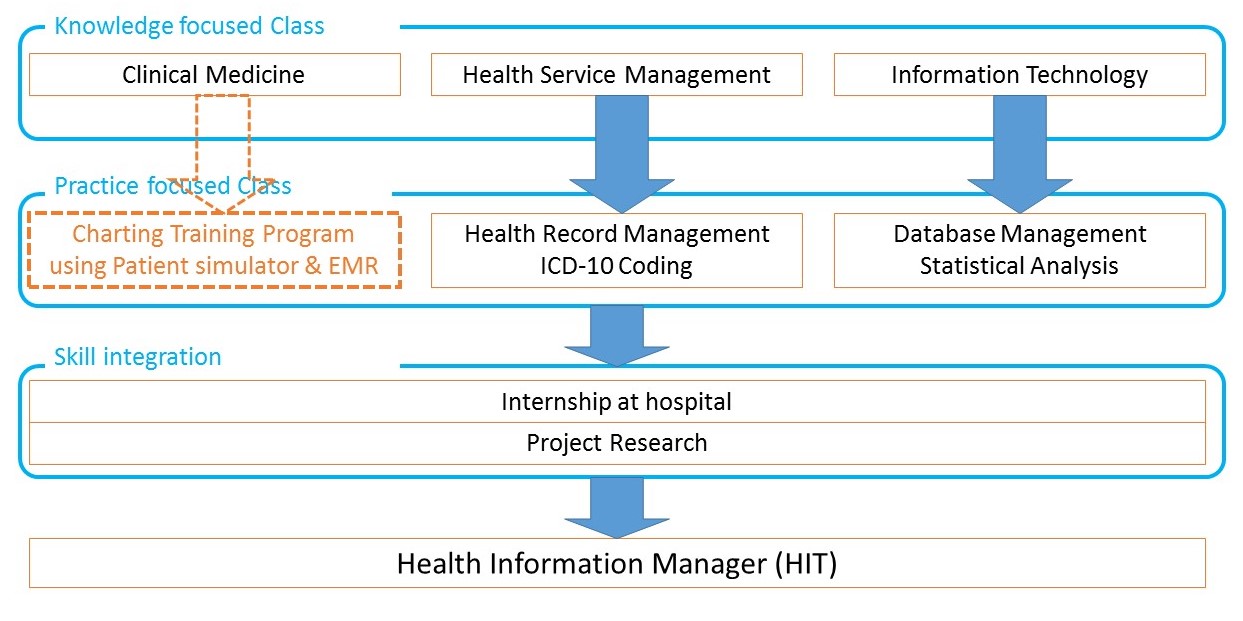



Theme
9BB Simulation 1
INSTITUTION
Tokyo Healthcare University - Division of Healthcare Informatics, Faculty of Healthcare - Tokyo - Japan
Appropriate medical treatment requires three components: appropriate physical assessment, appropriate medical intervention and appropriate medical records. Health information management (HIM) training involves learning to update patient medical records (charts). Clinicians generally update charts during patient consultations; opportunities to practise charting outside that setting are rare. In a previous training program, students watched a patient consultation video; then, practised charting. However, this was ineffective because students were ‘just writing’ and could not effectively practise charting. Our objective is to design a new HIM training program, where students can chart patient information during consultation, using a patient simulator and electric medical record (EMR) system.
Our HIM training program addressed the third aforementioned treatment requirement. Our training room had an EMR system and patient simulator (SIMMAN 3G). In the training simulation, students assessed, treated, and updated the chart of a simulated patient: 78-year-old man with suspected pneumonia. Students listened to the chief complaints, assessed the physical signs, and charted relevant data.

Students performed the simulated consultation within 2–7 min. Using EMR data and video recordings of each training session, we evaluated the charting skills, e.g. during consultation or examination whether critical signs, such as wheezing, indicating serious pneumonia patient in the patient were overlooked.
Our students recognized severity of a health condition during a medical consultation session and appropriately updated the patient’s medical record.
Teaching medical charting using patient simulators is highly effective for improving HIM skills and is better than the previous training methods.
 Send Email
Send Email